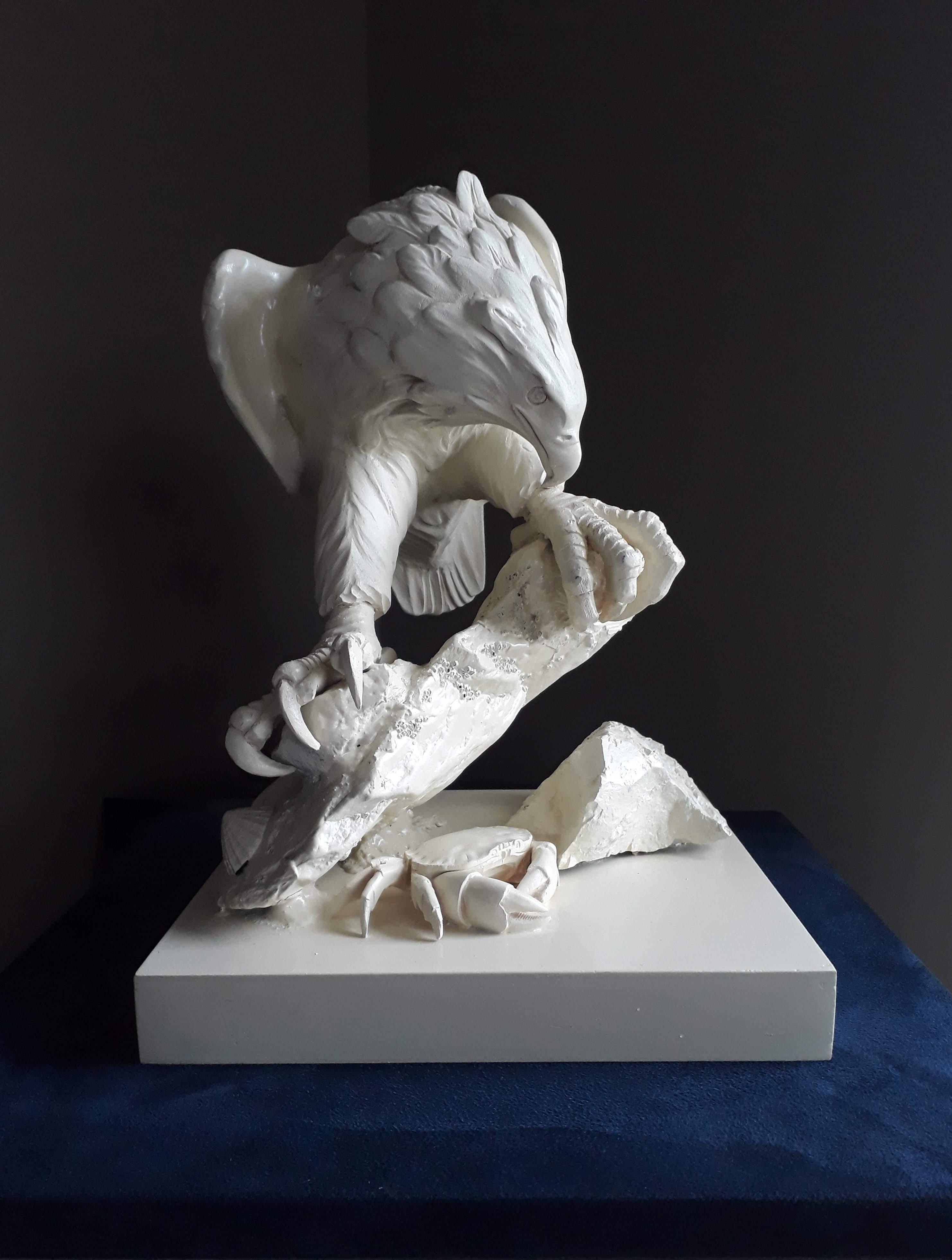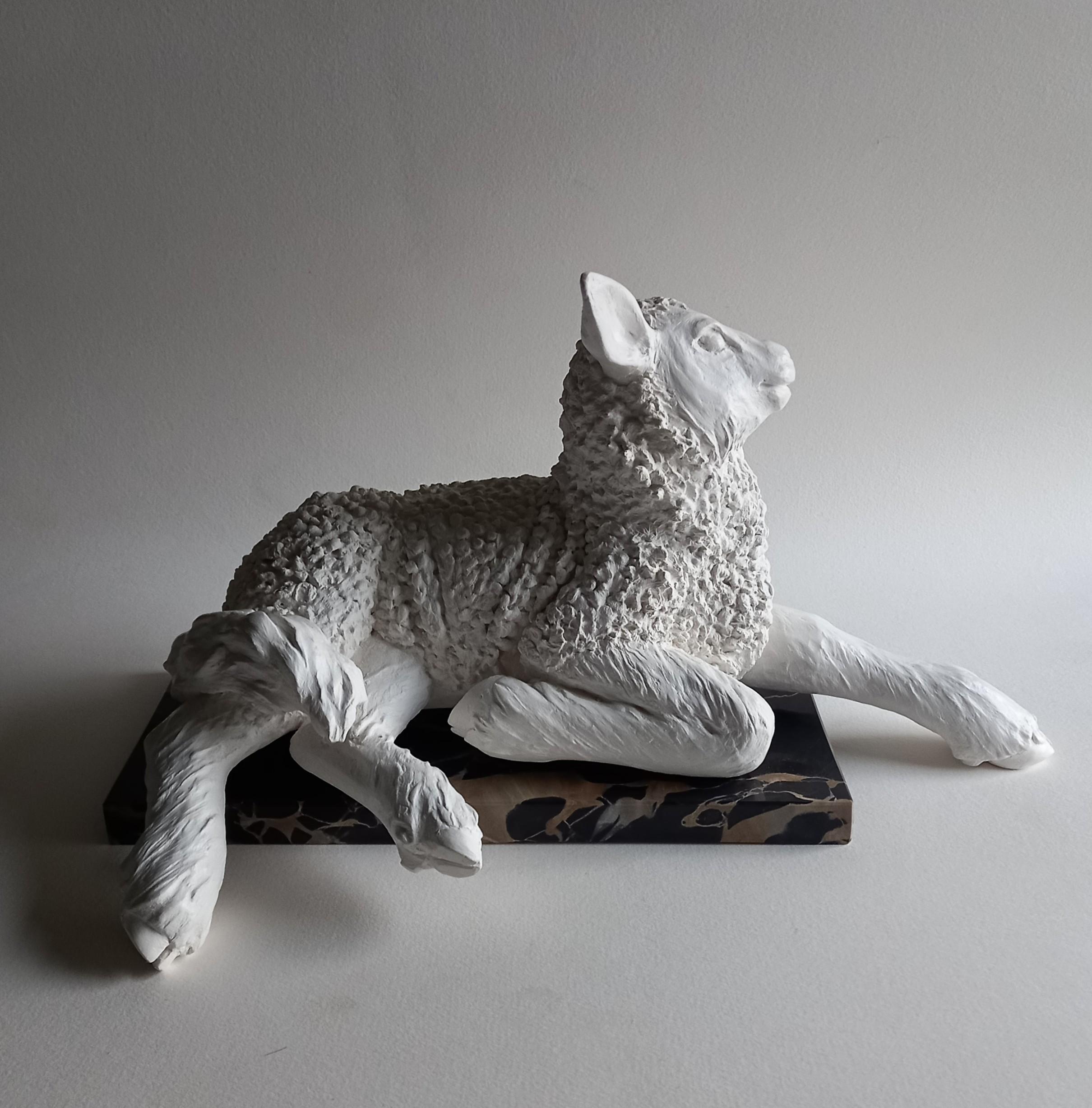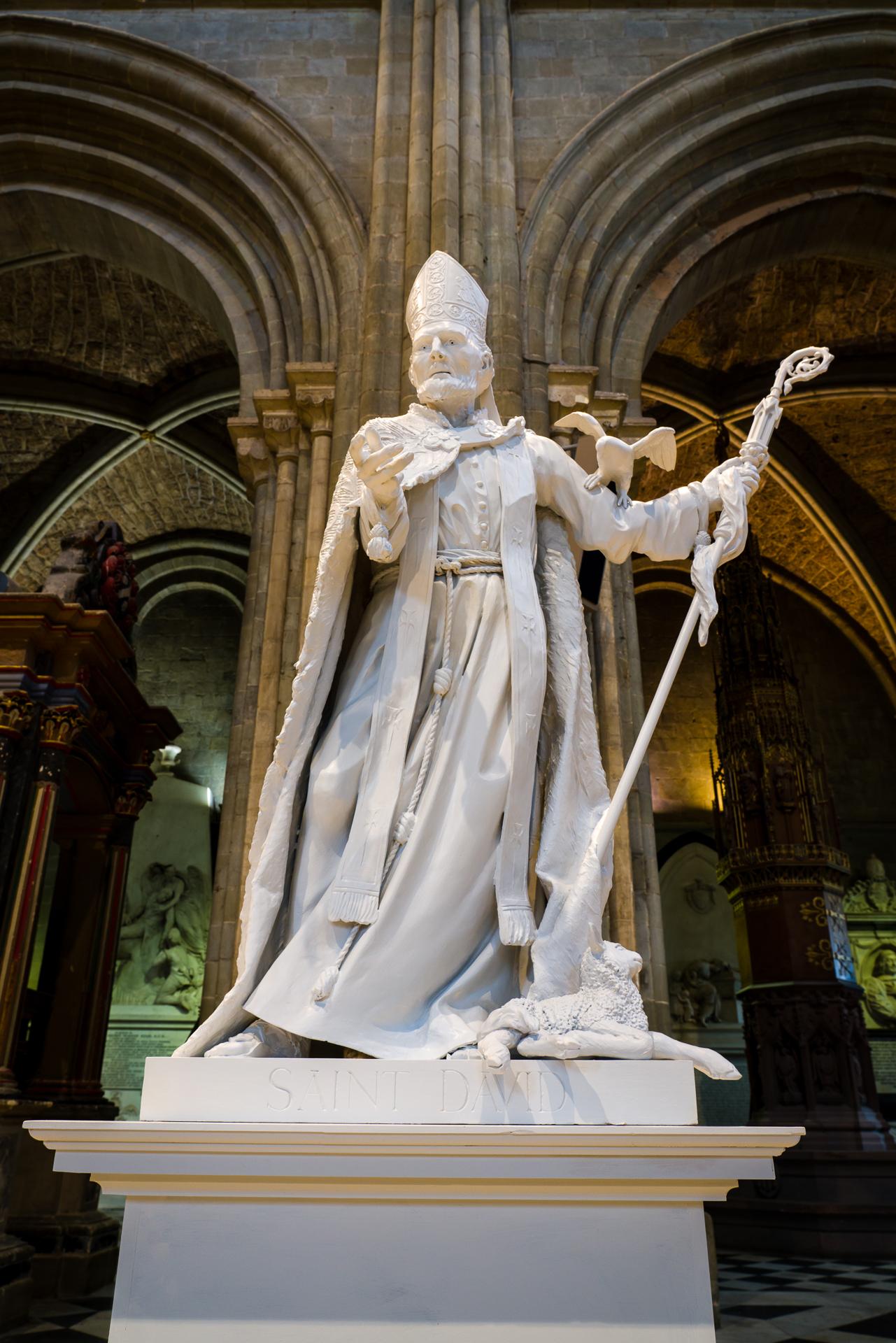Items Similar to Bronze of Pluto Abducting Proserpine after François Girardon
Want more images or videos?
Request additional images or videos from the seller
1 of 8
Bronze of Pluto Abducting Proserpine after François GirardonCirca 1700
Circa 1700
About the Item
After François Girardon
1628-1715 French
Pluto Abducting Proserpine
Bronze
This High Baroque period composition captures the famed narrative of Pluto and Proserpine from Roman mythology. The late 17th-century patinated bronze, created after François Girardon's marble composition, captures the very moment that Pluto seizes Proserpine. The anguished goddess reaches skyward, attempting to escape the god’s grasp while Pluto’s stoic face betrays his knowledge that his ploy will succeed. This pivotal moment in the mythological tale has captured the imagination of many art historical greats, from Bernini to Rubens. François Girardon’s version of the climax demonstrates incredible finesse and artistry, modeled expertly in bronze in the present work by a later sculptor. The statue brings a twist of intertwined bodies into a dynamic frenzy, paralleling the tension of the legendary story.
In ancient Roman mythology, Proserpine, the beautiful daughter of Ceres — known as Persephone in Greek mythology — was picking flowers in the fields when she was suddenly abducted by Pluto, the god of the underworld, and taken to his kingdom. Consumed with grief, her mother Ceres, the goddess of agriculture, scorches the earth, stopping the growth of grain and fruit. Jupiter attempts to intervene and secure Proserpine’s return to earth, negotiating a compromise with Pluto and the Fates that allows Proserpine to be released for part of the year before returning to Pluto’s underworld. Proserpine’s journey back and forth is an allegory for the changing seasons; when Prosperine is with her mother, the earth warms and provides bountiful harvests. Upon her annual return to the underworld, however, the earth once again becomes cold and barren.
After returning to France after years of training in Rome, François Girardon quickly rose to become one of the greatest artists in France. He was elected a member of the Académie Royale de Peinture et de Sculpture in 1657 and would become Chancellor of the Royal Academy in 1695. The artist was approached frequently for royal commissions and Girardon’s Pluto was originally commissioned by Louis XIV for the gardens at his Palace of Versailles. It was one of four monumental marble groups intended to decorate the corners of Charles Le Brun’s never completed garden at the chateau, the Parterre d’Eau. Each group of three figures symbolized one of the four elements: earth, air, fire and water. Pluto’s association with hell made him the apt symbol of fire.
Today, Girardon's creations can be seen in the Louvre in Paris, the Chapel of the Sorbonne, Musée Saint-Loup in Troyes and at the Palace of Versailles. Identical bronzes reside today at the Wallace collection in London, the Louvre in Paris, and the Getty Museum in Malibu.
Circa 1700
21 1/4" high x 11 1/4" wide x 10 1/4" deep
Provenance:
Michel Meyer Antiquaire, Paris, 18 February 1983.
M.S. Rau, New Orleans.
- Creation Year:Circa 1700
- Dimensions:Height: 21.25 in (53.98 cm)Width: 11.25 in (28.58 cm)Depth: 10.25 in (26.04 cm)
- Medium:
- Movement & Style:
- After:François Girardon
- Period:
- Condition:
- Gallery Location:New Orleans, LA
- Reference Number:
About the Seller
5.0
Vetted Seller
These experienced sellers undergo a comprehensive evaluation by our team of in-house experts.
Established in 1912
1stDibs seller since 2013
14 sales on 1stDibs
Typical response time: 3 hours
- ShippingRetrieving quote...Ships From: New Orleans, LA
- Return PolicyThis item cannot be returned.
More From This SellerView All
- Laocoön And His Sons By Adriaen De VriesLocated in New Orleans, LAAdriaen de Vries 1556-1626 Dutch Laocoön and His Sons Bronze A remarkable feat of artistry and skill, this bronze sculpture was created by famed Dutch artist Adriaen de Vries. Full of the swelling emotions and dramatic posing so quintessential to the period, the bronze is a masterclass in Baroque sculpture. The original Laocoön marble sculpture, after which this remarkable bronze was modeled, unquestionably influenced the lives and works of countless artists, authors, popes, kings and emperors since its re-discovery in 1506. Famously, Michelangelo declared the sculpture, created circa 35 BC, as the “greatest piece of art in the world.” Adriaen de Vries, an apprentice of the great sculptor Giambologna, undoubtedly sought to prove his skill and creative voice with his own depiction of this most famous scene. Known for his virtuosic casting technique, this rare and important sculpture embodies de Vries’ mastery. The story of Laocoön is one of the most famous in all of literature. As told by the poet Virgil, the Greeks, after an unsuccessful ten-year siege on the city of Troy, the Greeks craftily left a giant wooden horse outside the gates...Category
16th Century Baroque Figurative Sculptures
MaterialsBronze
- Laocoön And His Sons BronzeLocated in New Orleans, LALaocoön and his Sons Italian Bronze Group after Agesander, Polydorus and Anthenodorus Late 18th Century “The greatest piece of art in the world.” - Michelangelo, Italian sculptor, p...Category
Late 18th Century Baroque Figurative Sculptures
MaterialsBronze
- Bust of Pope Innocent XI Odescalchi by Domenico GuidiLocated in New Orleans, LAThis monumental bust is a museum-quality example of Roman Baroque sculpture. Crafted by the legendary Domenico Guidi and carved from Carrara marble, the impressive portrait captures the visage of Pope Innocent XI, Benedetto Odescalchi (1611-1689). It presents a larger-than-life example of Guidi’s remarkable skill as a sculptor, which ultimately made his workshop one of the most important in Rome during his age. Today, his works are rarely found on the market, particularly his extraordinary works in marble. Pope Innocent XI was born Benedetto Odescalchi into an Italian noble family of prominent bankers. Spending his early years in banking, he eventually turned to the law, earning his doctorate in 1639. His background would serve him well in his service to the papacy, and he became known as a frugal and devout member of the Church. In 1676, he was unanimously elected Pop after the death of Clement X. During his nearly 13-year reign, he instilled his own personal ideals of austerity and frugality onto the Church, with a deep commitment to reform and piety. He is captured here by Guidi in his traditional Pope’s mozzetta and camauro cap. A wide stole is draped over his shoulders, ornamented by acanthus leaves and the coat of arms of the Odescalchi family. It displays Guidi’s mastery over the chiaroscuro effect, particularly in the high level of contrast in his cheeks and his eyes, which Guidi achieved through various methods of high polish. A very similar portrait sculpture of Pope Innocent XI by Guidi can be found in the collection of the Royal Castle in Warsaw. The Warsaw bust belongs to a series of portraits of popes which the Odescalchi family commissioned from Domenico Guidi in the 1690s. Compared to that example, the present bust is far more dramatic, with deeper cut lines and a more precise expression. It is likely that the present piece was seen by the Odescalchi family, who ordered a similar one to be made. The piece was almost certainly intended to be displayed in a niche, given its dramatic cutting and its roughly carved back. Others of Guidi’s busts can be found in important collections throughout Italy, England and the United States, though many of these are lesser bronze repetitions. A bronze bust of the Pope Alexander VIII by Guidi is currently in the collection of the Victoria & Albert Museum (London), while a terracotta version of the same is in the Los Angeles County Museum. A bronze of Pope Alexander VIII can be found in the Princely Collection of Lichtenstein, and his impressive marble papal bust of Clement IX graces the pope’s tomb in Santa Maria Maggiore. The present bust of Pope...Category
17th Century Baroque Figurative Sculptures
MaterialsMarble
- Winston Churchill Artist Proof Bust by Ivor Roberts-JonesBy Ivor Roberts-JonesLocated in New Orleans, LAIvor Roberts-Jones 1916-1996 British Sir Winston Churchill Artist Proof Bronze with a green patina One of the greatest leaders of the modern world, Winston Churchill is among the...Category
20th Century Figurative Sculptures
MaterialsBronze
- Vénus De Milo Aux Tiroirs By Salvador DalíBy Salvador DalíLocated in New Orleans, LASalvador Dalí 1904-1989 Spanish Vénus de Milo aux tiroirs (Venus de Milo with drawers) Signed "Salvador Dalí EA III/IV" (on base) Bronze One of th...Category
20th Century Post-Impressionist Nude Sculptures
MaterialsBronze
- CoupleBy Agustín CárdenasLocated in New Orleans, LAInfused with a crisp modernity and subtle sensuality, this bronze sculpture by Cuban-born artist Agustin Cárdenas is an exceptional example of late-2...Category
20th Century Modern Figurative Sculptures
MaterialsMarble, Bronze
You May Also Like
- 19th Century French Bacchanalian BronzeLocated in San Antonio, TX19th Century French Bacchanalian Bronze in the 18th century style depicting two Putti, in the manner of Clodion. One putto reclines while another feeds it grapes. The Patina is worn ...Category
Late 19th Century Baroque Figurative Sculptures
MaterialsBronze
- White tailed sea eagle and crabLocated in Oswestry, GBThis white tailed sea eagle is depicted here on a rock on the shore of a remote wild Scottish Isle (Outer Hebrides). Hiding beneath the rock is a brown crab...Category
16th Century Baroque Figurative Sculptures
MaterialsBronze
- Pair of 19th Century Busts by Albert Ernest Carrier-BelleuseBy Albert-Ernest Carrier-BelleuseLocated in Santa Fe, NMSigned: A. Carrier-Belluese Two large bronze matching busts of an unknown male and female 22 x 10 x 11" male 23 x 10 x 9" female Both show signs of wear with their age but are in fa...Category
19th Century Baroque Figurative Sculptures
MaterialsMarble, Bronze
- LambLocated in Oswestry, GBThis lamb is also featured in my statue of Saint David. It conveys such character and gentleness that I decided to present it as a sculpture in its own right. I lays on a base of bla...Category
2010s Baroque Figurative Sculptures
MaterialsMarble, Bronze
- Saint DavidLocated in Oswestry, GBThis statue of Saint David, the Patron Saint of Wales stands 150cm high and is depicted with historical accuracy. Davies created this statue following extensive and thorough research...Category
2010s Baroque Figurative Sculptures
MaterialsBronze
- Llewelyn ab Iorwerth (Llewelyn the Great)Located in Oswestry, GBLlywelyn ab Iorwerth, (Llywelyn the Great) born in Dolwyddelan d.1240AD Aberconwy Abbey. King of Gwynedd and Prince of Wales he dominated Wales for 45 years. In 1200 Llywelyn made a ...Category
2010s Baroque Figurative Sculptures
MaterialsBronze
Recently Viewed
View AllMore Ways To Browse
Paris Art Bronze
Antique Earth
The Apters
Louvre Antique
French Baroque Art
Antique Sculpture London
Antique Sculptures London
Antique Mythology
Flowers Never Seen
Bronze God
Bronze Flower Sculptures
Bronze Fruit
Bronze Sculpture 18th
Palace Versailles
Bronze Sculpture 18th Century
Palace Of Versailles
Mythological Bronze
Bronze Goddess





